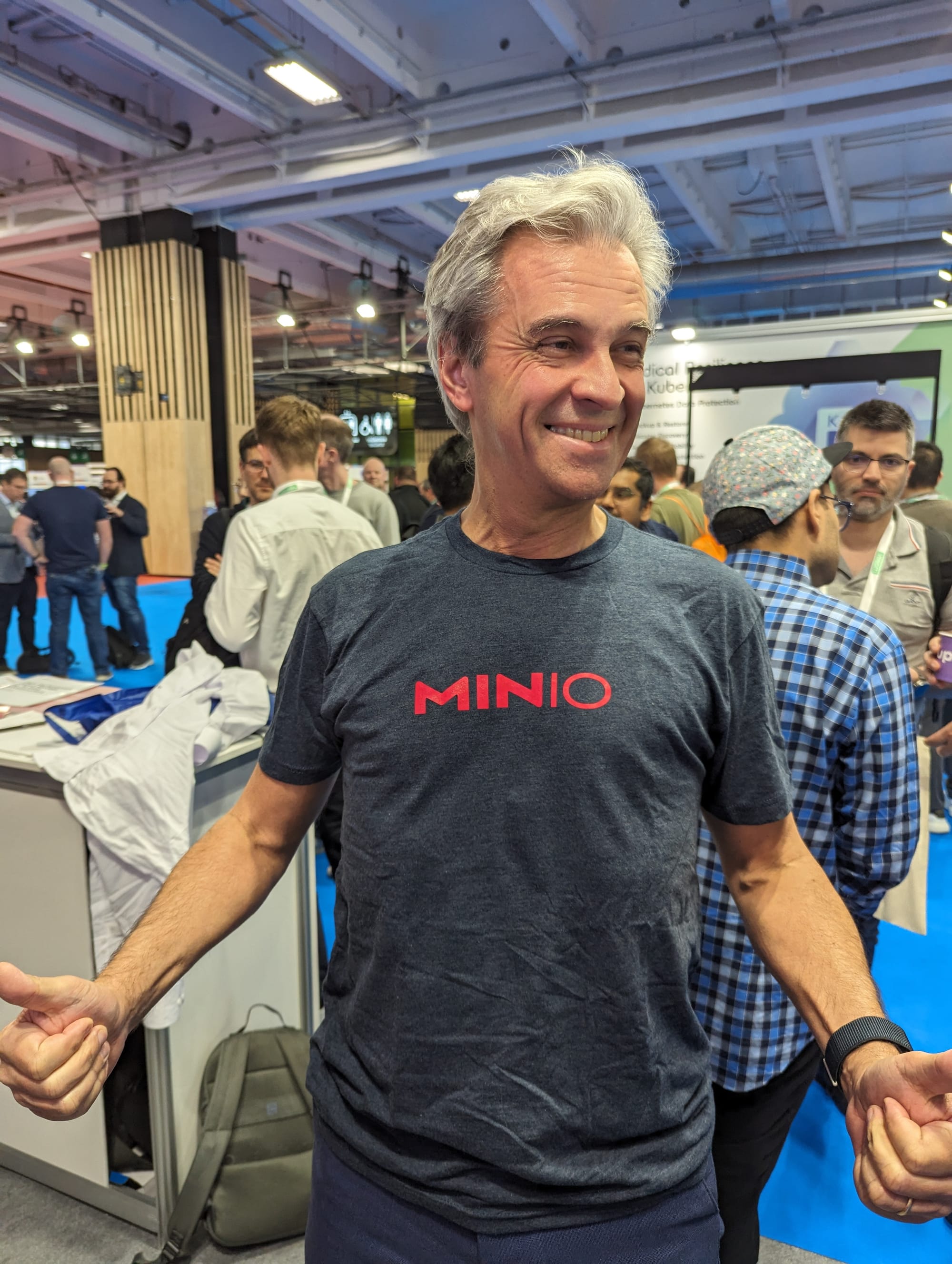Une dépêche de Kubecon Paris

Time for the annual KubeconEU review - it is unfiltered and occasionally unwelcome by the CNCF - but spoiler alert, Paris was a smashing success. We always love the people, we don’t always love the venue or show management, but Paris was a win and more importantly, Kubernetes is on a winning streak. First off, it just felt big. Personally, I had no idea the Porte de Versailles was as big as it was, and building seven was rocking. Part of that was the narrow hallways and escalator/stairwells, but it actually felt like 12,000 people, not some “registered” number - but actual folks onsite.

Second, the vibe of the show was, like the city of Paris itself, sophisticated and confident. The conversations were elevated, informed and evolved. There was a lot of talk about production and less about POCs. This reflects the maturity of the cycle. Despite talk of ongoing complexity, most of the folks we had talked to had moved past the “fragile, do not touch” stage and into the “I can sleep soundly” stage.
Third, we are clearly at the peak of the AI hypecycle. It was in every talk. Every one, even if they mentioned that it wasn’t the focus of it. We are already starting to see the stories about how everyone is catching Nvidia - but that misses the point. We are just beginning a massive shift in thinking, architecture and data infrastructure. While we are all a little weary (and wary) of the term, it is here to stay - which isn’t a net negative for the show. Kubernetes has a massive role to play in AI, since the infrastructure to be successful is far larger than we have seen prior. AI scale is a different beast and it won’t benefit the projects and vendors on the show floor equally. It will bring some of those vendors and projects to their knees, but it is the reality of the enterprise today. More compute, more storage, more management of those resources. If you want to get your arms around it, look at Keith Pijanowski’s excellent reference architecture for AI data infrastructure. Third, our musing on the future of observability seems to have resolved itself. It is a feature worthy of a few great companies, not dozens. Many of the companies we saw at previous shows were gone or severely diminished. We introduced a major feature in the space in the week prior to the show. The key from our perspective was to marry elite observability capabilities with elite knowledge of data infra. Together you can manage at a scale that was previously unimaginable. Hundreds of servers, thousands of drives, billions of objects.
Fourth, we continue to be impressed by the shift left mentality of the software development process. Everyone understands that security is imperative and that it is not an afterthought - it has to be a forethought. We fielded questions on Kubernetes operator security, along with several discussions on MinIO Tenant security when it comes to sharing AI/ML workloads. Additionally there was considerable interest in our new MinIO Firewall, to have a secondary line of defense against intrusions. This interest complimented the conversations on replication, object locking and versioning as a safeguard against ransomware attacks. Again, top of mind and early in the process.
Finally, this was the year platform engineering seemed to burst onto the scene. All of a sudden, seemingly all at once, everyone was part of a platform engineering team. It makes sense. The now pervasive adoption of cloud computing has necessitated the development of robust platform engineering roles to manage and optimize the cloud operating model. DevOps, Automation, Continuous Integration/Continuous Deployment (CI/CD), microservices architectures have all been subsumed under this cool new name (remember when data science was the cool kid on the block?). It goes beyond this, however, there is increased focus on the developer experience. Faster, simpler, better. Companies with platform engineering teams that can build and manage internal tools streamline development workflows will outcompete their competition.
At the core of all of this, however, is the data. It continues to grow at an extraordinary rate. It continues to amaze us how few data infrastructure companies actually show up at Kubecon - EU or US. On one hand, we get it, these aren’t their people. Developers don’t like proprietary appliances or legacy SAN/NAS solutions. The two other “storage” vendors we saw there were embarrassingly empty - we know because we had to walk past them 3-4 times a day to refill our t-shirt stock.
But developers want and need data storage. We know this because close to 15% of the show is now wearing our aforementioned t-shirt and many of them were wearing them at the show itself. Why, because they appreciate cloud-native software that “just works” - which is exactly what MinIO offers them. We look forward to continuing the conversation this fall in Salt Lake City at KubeconNA. If you have not been there in recent years, it will be a treat. The Silicon Slopes is hip, now and wow.
